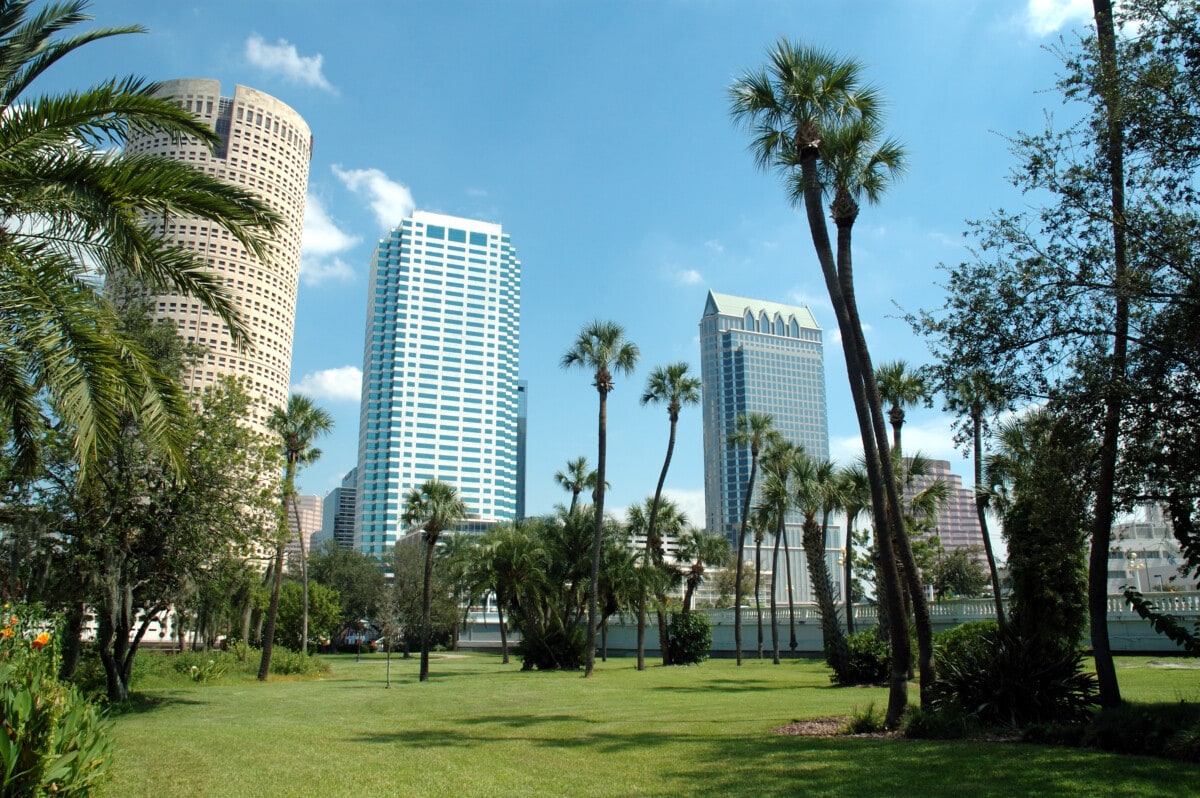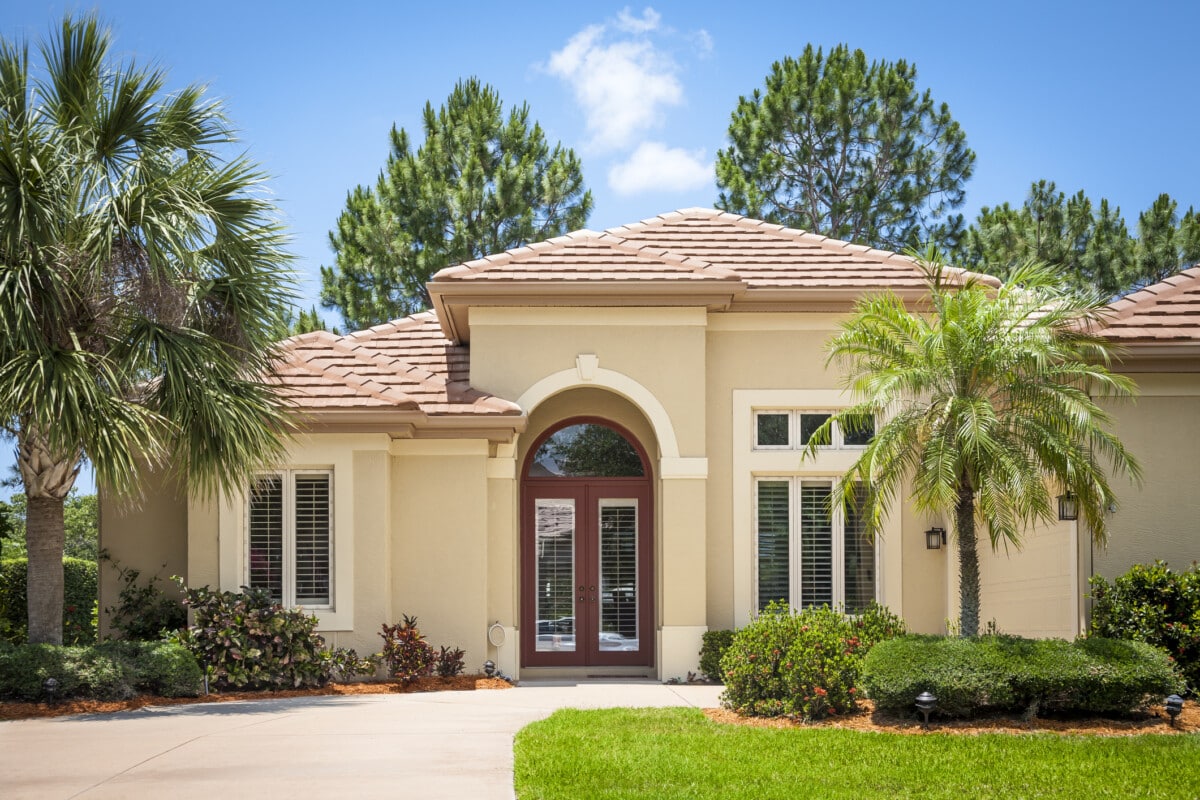
While it’s less than in Miami, it’s still more than many residents make.
Tampa, FL, is known for its crystal clear beaches, historic neighborhoods, lively sports culture, and unique festivals. In addition to being a coastal haven full of culture, Tampa is also home to a fairly competitive real estate market that’s seen large growth in recent years.
For many, buying a home in Tampa is a dream come true, but it’s also important to know how it will impact your finances. From down payments to monthly mortgage payments, there’s a lot to understand before buying your first home
So whether you already live in The Big Guava or are looking to relocate to the area, here’s a breakdown of the income you’ll need to purchase your first home in Tampa.
Check out our original report for a detailed nationwide analysis.
How much income do you need to buy a starter home in Tampa?
The median sale price of a starter home in Tampa is $255,000. In order to afford this, first-time homebuyers in Tampa should make $82,528 per year, up 7.8% from 2023. However, the median income in Tampa is $75,316, meaning the typical resident can’t afford a starter home.
As expected, starter homes in Tampa are more affordable than the average home (all price brackets combined; see methodology for details). In order to afford any median-priced home in the area, you’ll need to make $103,613 (as of October 2023).
Nationwide, you need an income of $75,849 to afford a typical starter home, which costs an average of $240,000. The average U.S. household earns an estimated $84,072.
First-time homebuyers’ guide to the Tampa housing market
Tampa’s housing market has experienced steady growth in the past five years, with a larger jump in popularity during and after the pandemic. Tampa’s recent popularity has largely been due to its sunny weather and relatively affordable housing, making it attractive for coastal homebuyers searching for sunshine and affordability. In fact, Tampa was the second-most popular metro for relocating homebuyers nationwide in June 2022.
This popularity has helped push home prices above the national median and beyond. From January 2021 to April 2024, the median home price in Tampa rose from $290,000 to $427,000. The area was particularly susceptible to buyers backing out of contracts, though.
Interestingly, condos in the area have actually dropped in price recently as they recover from a surge in popularity that priced out many buyers. Rising insurance and HOA costs resulting from extreme climate risks also helped lower prices.
If you’re looking to move to Tampa, the area is home to many amenities and attractions throughout its neighborhoods. The Busch Gardens, Florida Aquarium, ZooTampa, and Ybor City (a historic neighborhood) are a few popular options. Some popular neighborhoods in Tampa include Forest Hills, Harbour Island, and Bayshore Beautiful.
What does a typical down payment look like for a starter home in Tampa?
Here are some common down payment amounts for a typical $255,000 starter home in Tampa:
| Down payment percentage | Down payment amount |
| 3% down payment | $7,650 |
| 3.5% down payment | $8,925 |
| 5% down payment | $12,750 |
| 10% down payment | $25,500 |
| 15% down payment | $38,250 |
| 20% down payment | $51,000 |
Down payments can range from 0% to 100% of the total house price, depending on your budget, loan type, and long-term priorities. While experts have historically recommended budgeting for a 20% down payment, the increasing cost of homes and continued sluggish wage increases has led to a 15% down payment becoming more common.
Some loan types allow for lower down payment amounts. For example, a Federal Housing Administration (FHA) loan requires just 3.5% down, while the lowest possible down payment for a conventional loan is 3%. These amounts typically depend on your credit scores, so buyers with higher credit scores may qualify for lower down payments.

What is the typical mortgage payment for a starter home in Tampa?
The typical monthly mortgage payment for a starter home in Tampa is $2,063. This assumes you put 3.5% down and have around a 7% interest rate.
If this payment sounds too high, Tampa rentals may not be any more affordable unfortunately; the average rent price in Tampa is $2,288, over $200 more than the median mortgage payment. Regardless, you can use an affordability calculator to see what you can afford based on your income and down payment.
What should you do next?
If you’re in the market for your first home in Tampa, it’s important to understand how much house you can afford. Take your annual income, credit score, the current mortgage rates, and local market trends to make a decision that works best for you.
From there, a Tampa agent can help you navigate the entire home buying process and provide valuable local expertise. To learn more about how to buy a home, check out Redfin’s First-Time Homebuyer’s Guide.
Methodology
Redfin divides all U.S. properties into five buckets based on Redfin Estimates of homes’ market values. There are three equal-sized tiers, as well as tiers for the bottom 5% and top 5% of the market. Redfin defines “starter homes” as homes whose sale price fell into the 5th-35th percentile of the Redfin Estimate tier.
We calculated the annual income needed to afford a starter home by assuming a buyer spends no more than 30% of their income on housing payments. Housing payments are calculated assuming the buyer made a 3.5% down payment and also take a month’s median sale price and average mortgage-interest rate into account.
The national income data is adjusted for inflation using the Consumer Price Index. 2024 income is estimated based on projections from the U.S. Census Bureau’s (ACS) 2022 median household income using the 12-month moving average nominal wage growth rate. The rate was compiled from the Current Population Survey and reported by the Federal Reserve Bank of Atlanta.
We assume housing payments include the mortgage principal, interest, property taxes, homeowners insurance, and mortgage insurance (when applicable).
All data sourced February 2024 unless otherwise stated.





